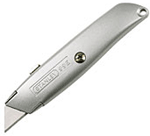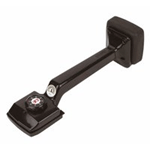While we strongly recommend professional installation for carpets due to their cost and potential for costly mistakes, we understand DIY enthusiasts may want to try.
If you have a good amounted of basic DIY knowledge, there is now reason why you cannot get a great result, so we have listed the basic points to remember and steps to work through.
How to Measure a Carpet
One of the most important things to get right when buying a new carpet and fitting it is ensuring the new one is the correct size to cover the floor area of the room you are fitting in.
If it’s not then you are left with the only choice of having to make joins and seams using an additional piece of carpet. Although this is suitable in some situations, such as when the room is wider than the carpet is supplied in, it’s best if you can avoid such situations.
To ensure that you have measured your room correctly, work through the following tips:
Measure a Room for Carpet
To correctly measure a standard room for a carpet, work through the following steps:
- Draw a room plan. First, on a piece of paper, draw a rough plan of the room including any doors ways, bay windows, alcoves, fireplaces and the similar
- Measure room length. Using a tape measure, measure the total length of the room from and to the furthest point on each side e.g. the middle of any doorways, the rear of alcoves or bay windows etc. Note on your plan
- Measure room width. Repeat the same for the width and measure from the furthest point on each side. Centre of doorway or rear of bay window, alcove or similar. Again, note on your plan
- Round up each measurement. Round to the nearest whole 10cm e.g. if room is 2.56m wide, round up to 2.6m. Do the same for the length
- Add 10-20%. Just to be on the safe side, it’s a good idea to add 10-20% to each measurement to compensate for any rooms that may not be totally square e.g. width = 2.6m + 26cm = 2.9m (including rounding up) and width = 4.5m + 45cm = 5m (plus rounding up)
- Calculate room size. Multiply the room width by the length e.g. 2.9 x 5 = 14.5sqm square metres
Note: It’s a worthy point to note that you should always take several measurements for both width and length when measuring a room. Although something may look square, it very rarely is, especially when it comes to the rooms in your home
Measuring Stairs for Carpet
Although rooms are fairly straight forward to measure, stairs are a little more tricky, depending on their shape.
Measuring Straight Stairs
If you are carpeting a straight run of stairs e.g. a straight staircase then you can simply measure each step, this includes both the tread (the part you stand on) and the riser (the upright rear up to the next step) and around the nosing, if there is one (the slight protrusion beyond the riser at the front).
To measure a straight staircase, using a tape measure, simply measure form the back of each step to the front of the nosing, note this measurement, then down the nosing, again note the measurement and again from the nosing to the riser and finally down the riser to the next tread and then add them altogether.
If you know each step is exactly the same size, simply multiply the measurement above by the total number of steps and this will give you a total length.
If you are unsure whether all steps are the same size, measure each step individually and add all the measurements together.
Whichever method you use, again, add 10-20% to the length needed for a little allowance.
Measuring Curved Stairs
If you have a set of curved stairs then measuring is a little trickier. Firstly, for any straight sections, use the method above e.g. using a tape measure, measure from the back of the tread to the front, around the nosing and then down the riser and note each measurement down on a piece of paper.
When you get to a curved section, measure from the rear of the widest part of the tread to the front, around the nosing if present and then down the riser and then note the measurement. Repeat this for any other curved sections.
Once you reached the bottom of the staircase, add all the measurements together, add 10-20% and this will give you the total length you need.
Dealing With Joints
As carpets and indeed lino/vinyl only come in widths of 4 or 5m, if you find that the room you’re working with is wider than this then you will need to create a join or seam as it’s known.
It’s also important to note that the pile of a carpet is woven in one direction so any joins need to continue the carpet in the same direction so you don’t created opposite in the pile direction which will in turn create shadows which will stand out a mile off.
If the carpet is patterned then you will also need to continue the pattern correctly when making a join, so this is also a consideration.
If you know you have to make a join in your carpet, think about the following:
- Try to position the joint out of any areas subject to heavy foot traffic
- If you can, position it in an area that will cover it with furniture
- Try to lay it to minimise wastage. if you have a room 8m long and 6m wide, you will still need 2 pieces of carpet 6x8m, although you will only need a 1x8m section from one piece, wasting 7x8m. Sometimes laying across the width of the room as opposed to length will get around this
- Increasing the number of joints can sometimes reduce the amount of carpet needed. As opposed to needing a full 8m length (in the example above), adding another joint would reduce the carpet needed to 2x 4m sections that could be added to the length of just 1 piece
- Increasing the number of joints generally means that you can reduce the total amount of carpet needed so experiment. As long as you can live with the volume of joints, you can save yourself, potentially a lot of money and wastage
Carpet Fitting Tools You Will Need
In order to fit your carpet correctly, you will need the following tools and products:
- Carpet knee kicker
- Carpet bolster
- Knee pads
- Stanley or hobby knife with 5 blades
- Some scrap carpet to practice with (ask your supplier)
- Enough old newspapers to cover the floor area
- Double sided tape
- Door strip
- Tape measure
- Hacksaw
- Hammer
- Staple gun and staples
- Lining paper
- Carpet underlay
- Enough carpet to cover the area you’re working on
- Spray glue (if needed)

Knee pads for saving wear and tear on trousers and knees
Preparing a Room for Laying New Carpet
As is often the case with many other DIY and home improvement jobs, the overall outcome of a particular task very much depends on the preparation work that you have put in initially. If this isn’t done correctly then it wil certainly reflect in the finished job.
To correctly prepare a room or stairs for carpeting, work through the following steps:
- Remove old carpet or flooring. Remove any and all old floor covering that are present such as carpet, laminate, lino/vinyl or floor tiles. Ensure no traces remain
- Remove any glue/adhesive. If there is any remaining glue or adhesive from the floor covering, ensure this is also remove. You may need to use a solvent cleaner or heat gun to soften it but beware of fumes and ensure the area is well ventilated.
- Sweep and vacuum. Thoroughly sweep the entire floor over, removing any dust, debris and other similar items and then vacuum the entire floor over, making sure you get ant remaining unwanted objects
- Repair damage. If there are any damaged sections of flooring e.g. concrete splits or cracks, broken floorboards etc. ensure these are all repaired or replaced. To reduce draughts, consider it may be worth removing the existing floor and laying tongue and groove floorboards
- Level Floor. If the existing flooring is particularly out of level, consider levelling it using a liquid floor levelling compound or relaying floor joists for a floating floor that has badly sagged
- Knock down nail/screw heads. Run over the entire floors surface and check for any proud nail or screw heads and hammer or screw them back down below the surface
- Mark pipes and cables. Using a pipe and cable detector, run over the whole surface and note down the position of any pipes or cables in the floor and ensure you avoid these areas and don’t hammer or screw any nails or screws to avoid any damage
Once the existing sub-floor has been prepared correctly you can then get the underlay down in preparation for th final job, laying the actual carpet.
Carpet Underlay
To make the carpet and comfortable;e underfoot as possible it’s always a great idea to lay down some underly. This both softens it and also keeps dust down from penetrating through and into the room space.
Some carpets are supplied with a foam or rubber back which serves as the underlay but if not, they need to be laid on a separate underlay.
There are quite a few different types of carpet underlay available today made froma range of different materialseach with positives and negatives. One of the most commonly used these days is PU Foam underlay and this has quite a few benefits such as excellent durability, acoustic and thermal properties and is also pretty eco friendly but it does tend to be quite expensive.
Types of Carpet Underlay
Carpet underlays come in various types, each with its own pros and cons:
- Rubber Crumb: Durable but lacks thermal and acoustic insulation, suitable for non-domestic use
- PU Foam: Modern, offers excellent insulation and comfort, but can be pricey
- Felt Wool: Environmentally friendly, made from recycled materials, durable with good insulation
- Felt and Rubber Combined: Blends durability and insulation, features recycled materials
- Rubber: Durable and comfortable, lacks thermal insulation, less eco-friendly
Laying Carpet Underlay
To lay carpet underlay, a lining paper is first laid over the entire floors surface. This is either stapled down if on a timber floor or glued using spray glue is on a concrete or solid floor. This is essentially a dust barrier to stop dust and the similar penetrating up through the underlay and carpet.
Ensure any joints are overlapped by a few inches and taped using gaffer tape or aluminium foil tape.
Before the underlay is laid, any carpet grips or threshold strips are laid first around the room so that it can be firmly attached all around the room, down the stairs or whatever area your fitting to.
The underlay is then laid over the lining paper with the writing side facing up. This is the slippery side and allows the carpet to be adjusted when fitting.
Once laid it is laid over the floor it is then cut to size. Where any joins are made, ensure both sections are butted up together and then taped using gaffer tape.
For full instructions on how to lay carpet underlay, see our laying carpet underlay project.
How to Lay a Carpet
Now that you know how to measure for carpet correctly, prepare a an area for carpeting and lay the underlay, it’s time to actually get the carpet down.
Step 1: Rolling Out the Carpet
Start by rolling out the carpet in the empty room, and then cut it, leaving an extra 200mm (8 inches) around the perimeter. Ensure any pattern aligns with the walls and cut excess for doorways, leaving a good 100mm or so.
Roll it back up and set it aside.
Step 2: Prepare the Floor
Remove all previous coverings such as carpet, laminate, vinyl, or tiles and any remaining adhesive. Thoroughly sweep and vacuum the entire area to eliminate dust and debris.
Additionally, ensure any protruding nail or screw heads are pushed or screwed below the surface.
Step 3: Use Lining Paper
Secure underlay sheets to the floor using double-sided tape, spray glue or industrial staples. This prevents the underlay or foam backing from adhering to the floor, facilitating easy removal of the carpet in the future and also prevents dust and debris from penetrating up through the underlay and carpet.

Carpet gripper for the perimeter of the room
Step 4: Install Carpet Gripper
Place the gripper around the room’s perimeter, ensuring it’s positioned wherever the carpet edge will be.
The gripper, equipped with pre-installed nails, should be placed about 12mm (half an inch) from the room boundaries, such as skirtings. The masonry nails can typically be hammered into the floor screed, or floorboards.
Ensure that the sharp points on the gripper rods face towards the walls. These points help grip the carpet as it’s stretched over them, securing it firmly in place.
Step 5: Install Jointing Strip in Doorways
Measure the width of the doorway and then use a hacksaw to cut the door strip to the correct width and then nail it through the centre of the doorway.
The jointing strip has sharp points to grip the carpet effectively. These need to be facing out of the doorway to grip and hold it in place.

Carpet threshold strip for joining carpets in doorways
Step 6: Lay the Underlay
The underlay should now be laid inside the grippers. Lay it out with the slippery side up (the bit with the writing on) and then cut it to length.
lay the next piece next to it and again, cut to the correct length. Butt it up tight and then tape them together using gaffer tape. Make sure there are no gaps.
For full information on everyting you need to know about carpet underlay including how to lay carpet underlay see our project here.
Step 7: Unroll the Carpet
Unroll the carpet over the underlay, ensuring it’s kept square with any walls if there are patterns involved. Position the carpet into one corner (pick one to start at) so that the excess overlap folds onto itself, creating a crease where it meets the skirting board.

Using a Stanley knife to cut carpet into edges of room
Use the back edge of a utility knife blade to firmly press the crease into the joint where the carpet and floor meet.
Step 8: Trim the Carpet in the Corner
Focus on a section approximately 600mm from the corner of the room. Rotate the blade and cut along the crease for the 600mm length until you reach the corner.
next, make a vertical cut upwards to create the 600mm edge resting on the gripper, pressing it down to secure it onto the gripper nails, stopping it from moving.
Repeat this process for another 600mm along the remaining edge of the same corner. Now, one corner is snug against the skirting and anchored by the gripper rods.
Step 9: Install Carpet up to Skirting
With the knee kicker, set the teeth to lightly grip the carpet and place it down on the surface. Work along one edge, pushing the carpet into the gap between the gripper and skirting board before then cutting down through the gap to trim off the excess. Use the back of the blade to press the carpet down into the gap before you cut it.
Complete one edge, then return to the starting corner and work along the adjacent wall. Repeat this process, then use the kicker to stretch diagonally across the room from the starting point.

Knee kicker or carpet stretcher for getting the carpet tight
Step 10: Tighten the Carpet
Once you have worked your way down both sides and the carpet is cut to size and secured to the grippers, take up knee kicker once more and tighten the carpet to the skirting boards and any threshold strips once more.
This will fully tighten the carpet around the room, ensuring that it is fully engaged with the carpet grips and there is no chance of any rucks appearing due to slackness.
Step 11 – Finish the Edges
Finally, take your carpet bolster and finish all of the edges. To do so, use the bolster to force the edges of the carpet down behind the back edge of the carpet grippers and the underside of the skirting board or other edge finishing.
This will ensure a neat and professional finish and avoid any chance of the carpet catching on anything and being pulled off of the grips
Laying carpet is a tricky job if you have never done anything like it before but if you ensure you have measured and prepared correctly and then work methodically then there is no reason why you cannot get a great finish.

